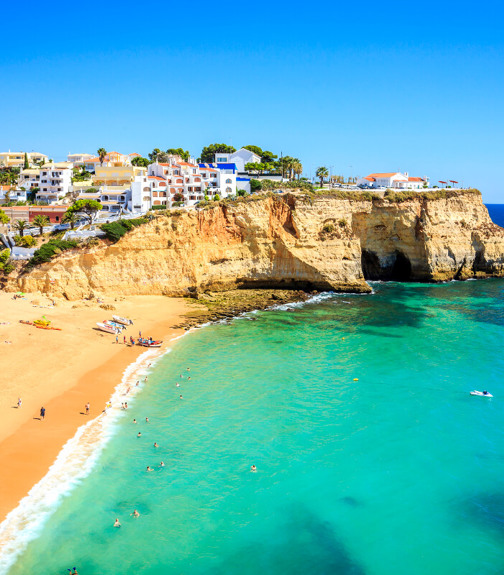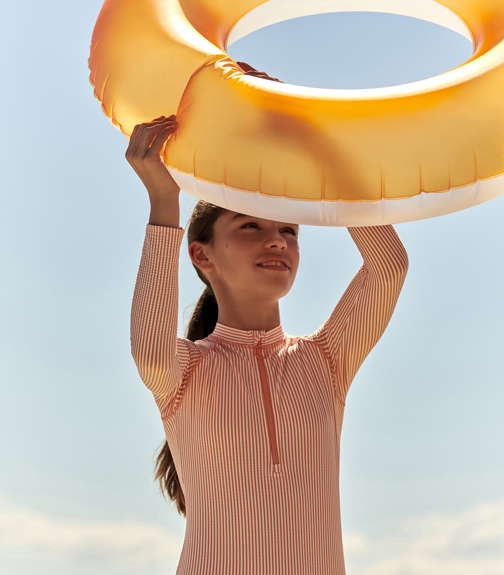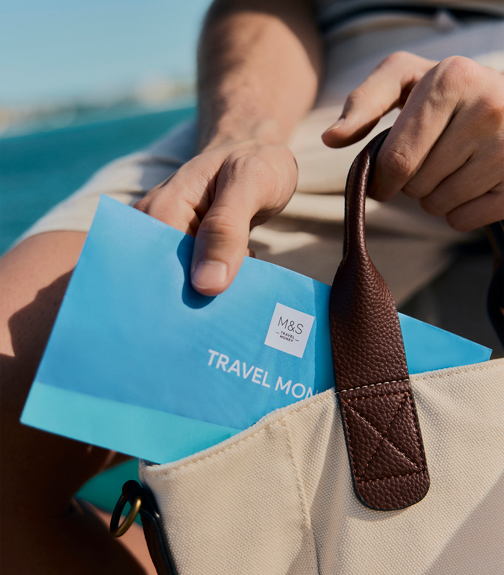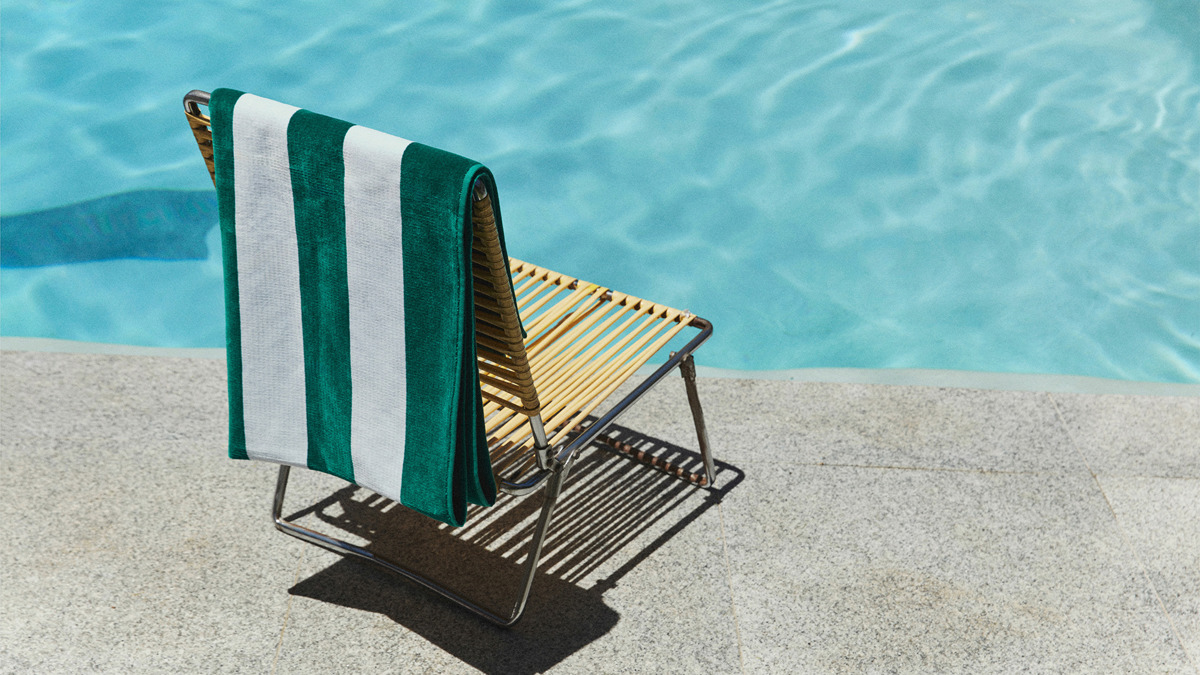How to buy Euros
-
Buy Euros online with Click & Collect at over 580 M&S stores. Use our Pounds to Euros (GBP to EUR) currency calculator to work out how many Euros you want. Pick your collection date and collect from your chosen M&S store.
Click & Collect EUR in as little as 60 seconds.
*Subject to availability.
-
Or visit your local participating M&S store to buy Euros. With stores nationwide - many open seven days a week and late into the evening - you can buy your Travel Money at a time that suits you.

Why buy Euros from M&S Travel Money?
Wherever you're visiting in the Eurozone, there are so many reasons to choose M&S Travel Money for your currency exchange.
- Stores open 7 days a week.**
- A choice of collection options.
- The market’s widest range of currencies.
**Store opening hours vary.

What you need to know about the Euro currency
20 of the 27 EU members use the Euro (EUR) as their official currency. The idea of a single European currency was put forward during the 1991 Maastricht Treaty. Following the official formation of the European Union, the Euro came into circulation in 2002 and replaced 19 different currencies.
Each Euro contains 100 cents and its currency symbol is €.
The Euro comes in both coins and banknotes.
Coins include:
1, 2 ,5, 10, 20, and 50 cents, EUR1, EUR2
Banknotes include:
EUR5, EUR10, EUR20, EUR50, EUR100, EUR200, EUR500
You can buy Euros online using our Click & Collect service.
^^Please note not all denominations are available to exchange.

Guides to Europe
Whatever kind of break you’re dreaming of, you’ll find it in Europe. From the peaks of the Pyrenees to the bays of the Mediterranean, the castles of Bavaria to the gleaming stores of Paris, Europe offers diversity, art, culture, history, adventure… in short, pretty much everything.
Frequently asked questions
You can use the Euro in 20 EU countries: Austria, Belgium, Croatia, Cyprus, Estonia, Finland, France, Germany, Greece, Ireland, Italy, Latvia, Lithuania, Luxembourg, Malta, the Netherlands, Portugal, Slovakia, Slovenia and Spain.
Travel costs vary hugely across Europe, depending on where you are and what you’re doing. But as an overview, here's a gist of average pricing in Europe's most popular destinations:
Paris
- Meal at an inexpensive restaurant for 2: €65 (£55.32)
- Domestic beer at a restaurant: €7 (£5.96)
- Bottle of water: €2.87 (£2.44)
- Regular cappuccino: €3.97 (£3.38)
- Hotels per night: €100 - €400 (£86 - £343)
- One-way city bus ticket: €2.50 (£2.13)
Rome
- Meal at an inexpensive restaurant for 2: €65 (£55.32)
- Domestic beer at a restaurant: €5 (£4.26)
- Bottle of water: €1.10 (£0.94)
- Regular cappuccino: €1.58 (£1.34)
- Hotels per night: €80 - €400 (£68 - £343)
- One-way city bus ticket: €1.50 (£1.28)
Madrid
- Meal at an inexpensive restaurant for 2: €60 (£51.08)
- Domestic beer at a restaurant: €3.50 (£2.98)
- Bottle of water: €1.79 (£1.53)
- Regular cappuccino: €2.57 (£2.18)
- Hotels per night: €60 - €250 (£52 - £215)
- One-way city bus ticket: €1.50 (£1.28)
Wherever you’re visiting in Europe, it’s a good idea to take both cash and cards. While card payments are accepted in most developed areas, this shouldn’t be relied on. You should always have cash on hand for tipping and visiting more remote areas.
That depends on where you’re visiting. Expect to only be able to use Euros in Eurozone countries, but other European currencies like the Polish złoty, Czech koruna or Swedish krona, Norwegian krone and Icelandic kronur may be accepted in areas near the country borders. You shouldn’t, however, rely on this.
For short trips to the EU or countries in the Schengen area, you don’t need a visa as long as both of the following apply: you're visiting as a tourist or for certain other reasons, or you're staying for 90 days or less in a 180-day period.
Again, it depends where you’re travelling to in Europe. But generally speaking, tipping is more appreciated than expected. It’s polite to tip around 10% of the total bill.
Europe has a diverse range of languages and cultures. English is a common second language across the continent, but Europe’s 24 official native tongues include:
Bulgarian, Croatian, Czech, Danish, Dutch, English, Estonian, Finnish, French, German, Greek, Hungarian, Irish, Italian, Latvian, Lithuanian, Maltese, Polish, Portuguese, Romanian, Slovak, Slovenian, Spanish and Swedish.
Security levels vary across Europe, but it is generally considered a safe place to visit, though it’s always wise to check and follow government travel advisories before planning your trip.
You can also visit the Foreign, Commonwealth & Development Office (FCDO).
That all depends on where you’re visiting and what you’re hoping to do when you get there. To ski through the Alps, aim to travel December to April. To soak up the sun in Marseilles, choose June to August for peak sun. The capital cities offer attractions all year-round, whether taking a spring walk through Montmartre in spring or spending a cosy autumnal afternoon in an Amsterdam cafe.
Yes, it’s a good idea to buy your Euros in advance to help get better rates and avoid hidden fees.
Before you visit us to buy Travel Money, please check your chosen store is a participating Travel Money location. Euros are usually in stock, but just to be sure, it’s a good idea to order your Euros in advance.
Other popular currencies
If you’re planning a future holiday or a trip that takes in multiple destinations, these other currencies may be useful:


